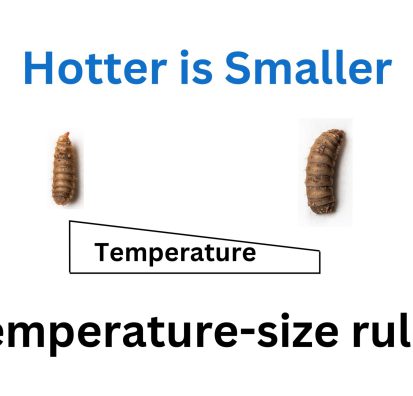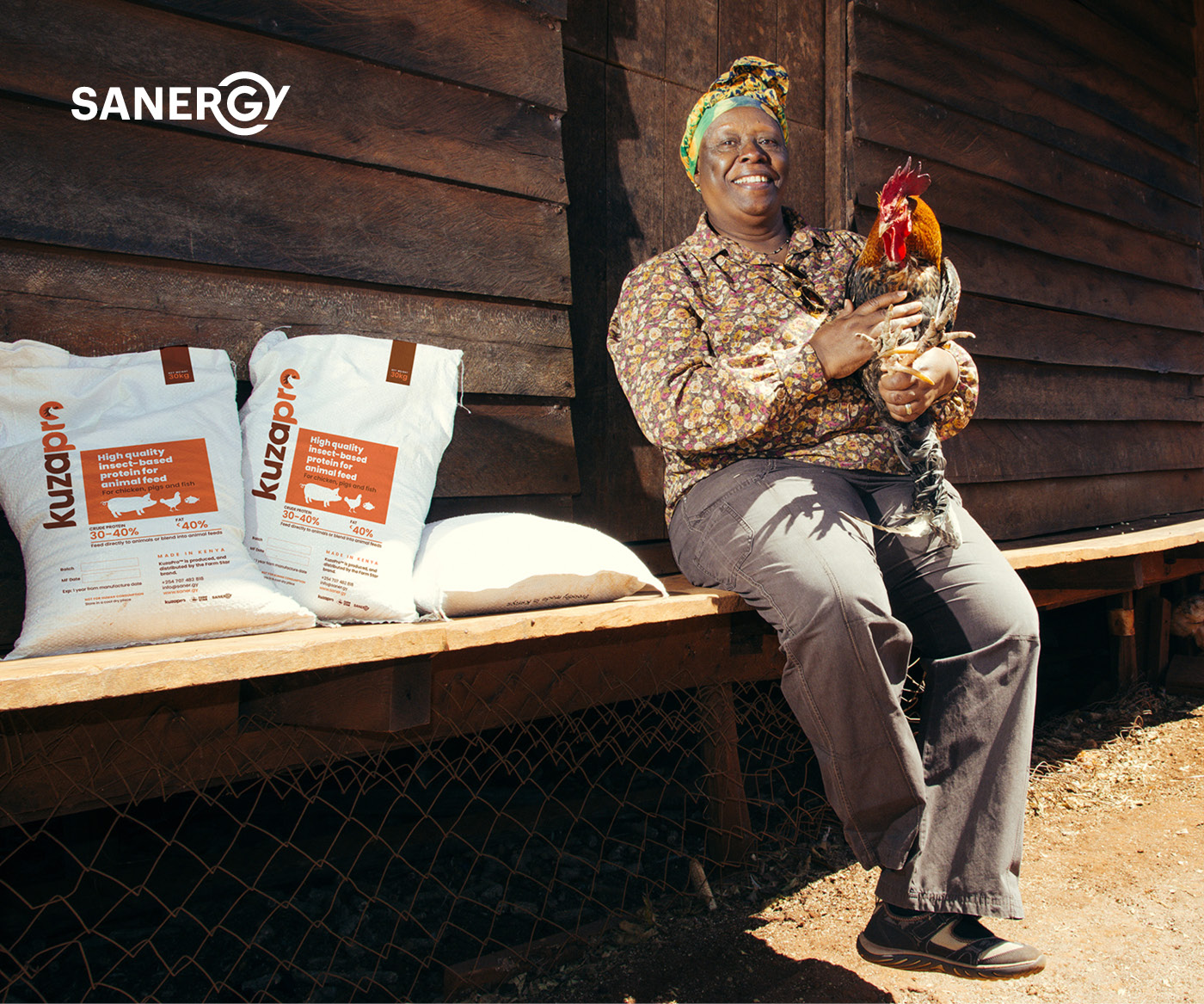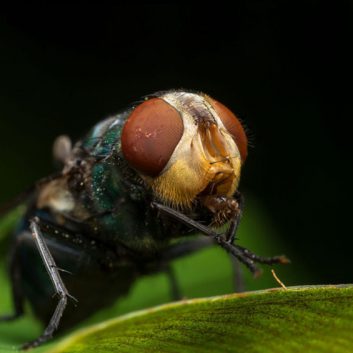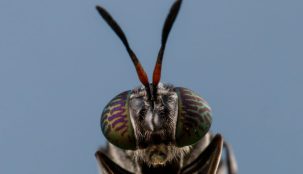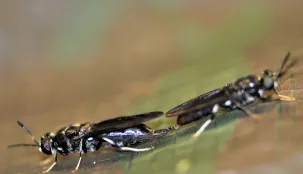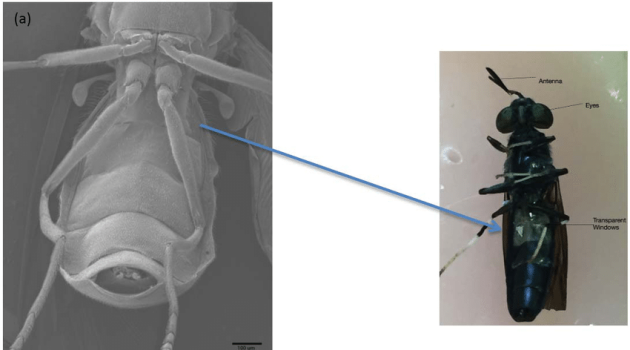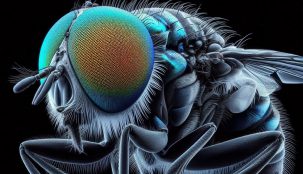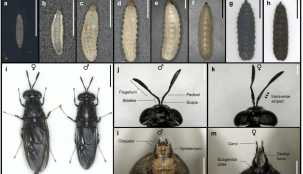Hotter is smaller: Industrial mass rearing Black Soldier Fly larvae.
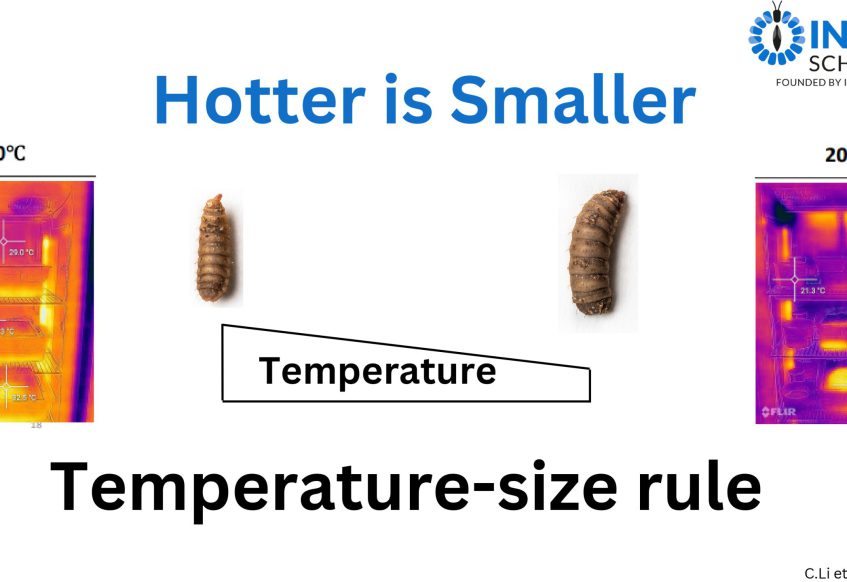
A low air temperature is suggested for industrial mass rearing BSF larvae as long as larvae start to aggregate and generate heat.
Thermoregulation allows organisms to maximize net energy gain (e.g., for body growth). BSF larvae reared in 20 ℃ have better feed conversion rate and large body size compared to larvae in the 30 ℃, meaning that less energy might be allocated for maintain stability (e.g., adjusting to heat stress) and greater net energy is gained by BSF larvae in 20 ℃.
BSF larvae can benefit from maggot heat at low air temperatures (20 ℃) through larval activities (e.g., aggregation). Probably, through larval aggregation, larvae grow relatively fast with greater digestibility while maintaining a relatively low metabolic rate at lower air temperatures resulting in the best performance.
Hotter is smaller (temperature-size rule) describing the general phenomenon that individuals developing at hotter temperature tend to be smaller. However, it’s not universally true, especially in low density rearing. High temperature (30 ℃) with low density larvae still have better feed conversion and high average larval weight, meaning that besides temperature, other factors (e.g., enzymes for digestion) could have influence. E.g., some insect larvae have extra-oral digestive enzymes and that are more efficient in a group of hundreds and thousands of larvae. On an industrial scale (e.g., at least 10000 larvae/unit), with the rearing process at 30 ℃ can contribute to small larvae since BSF larvae suffer at high air temperatures when they cannot get rid of the heat (larvae will disperse instead of aggregating).
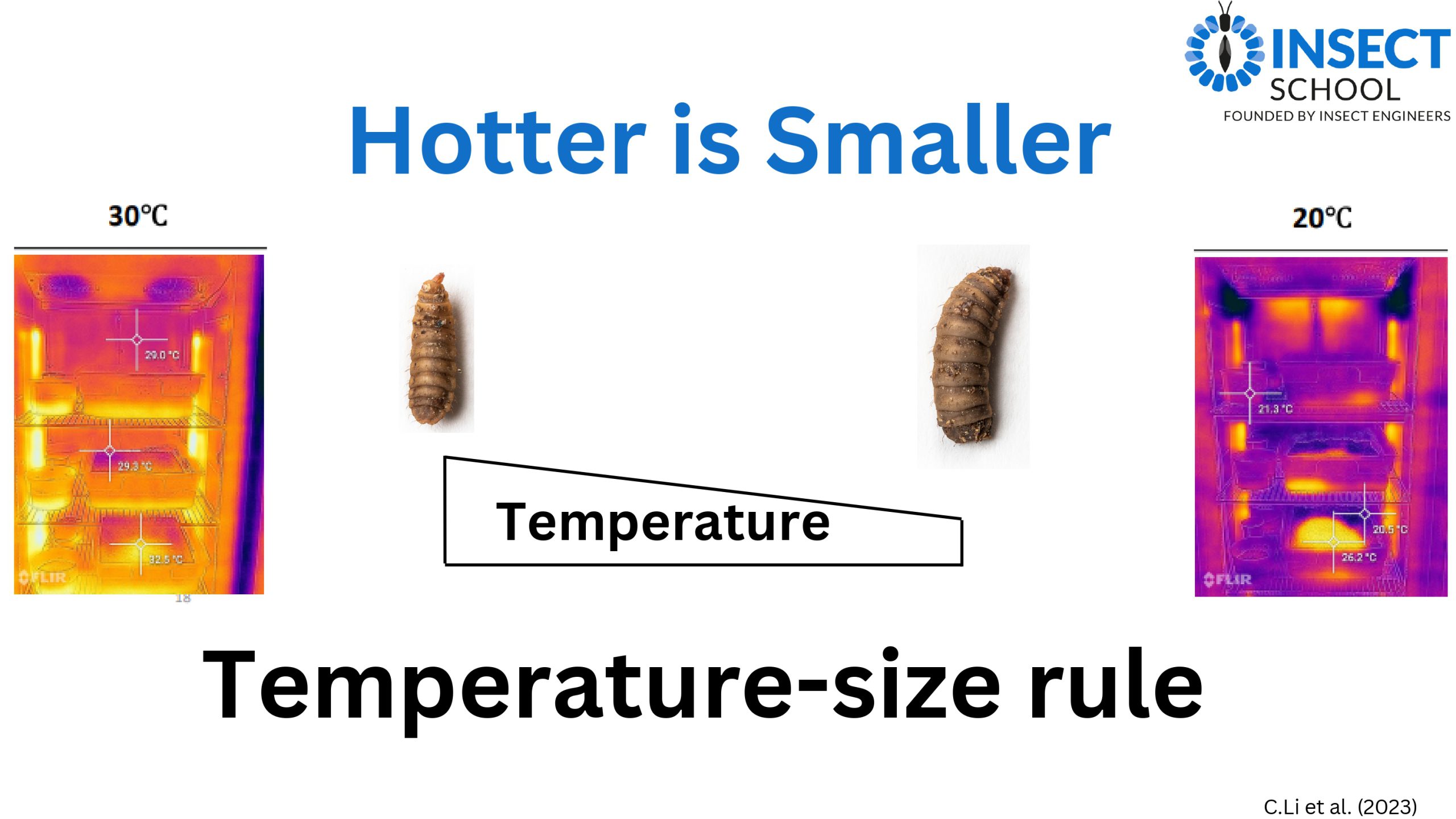
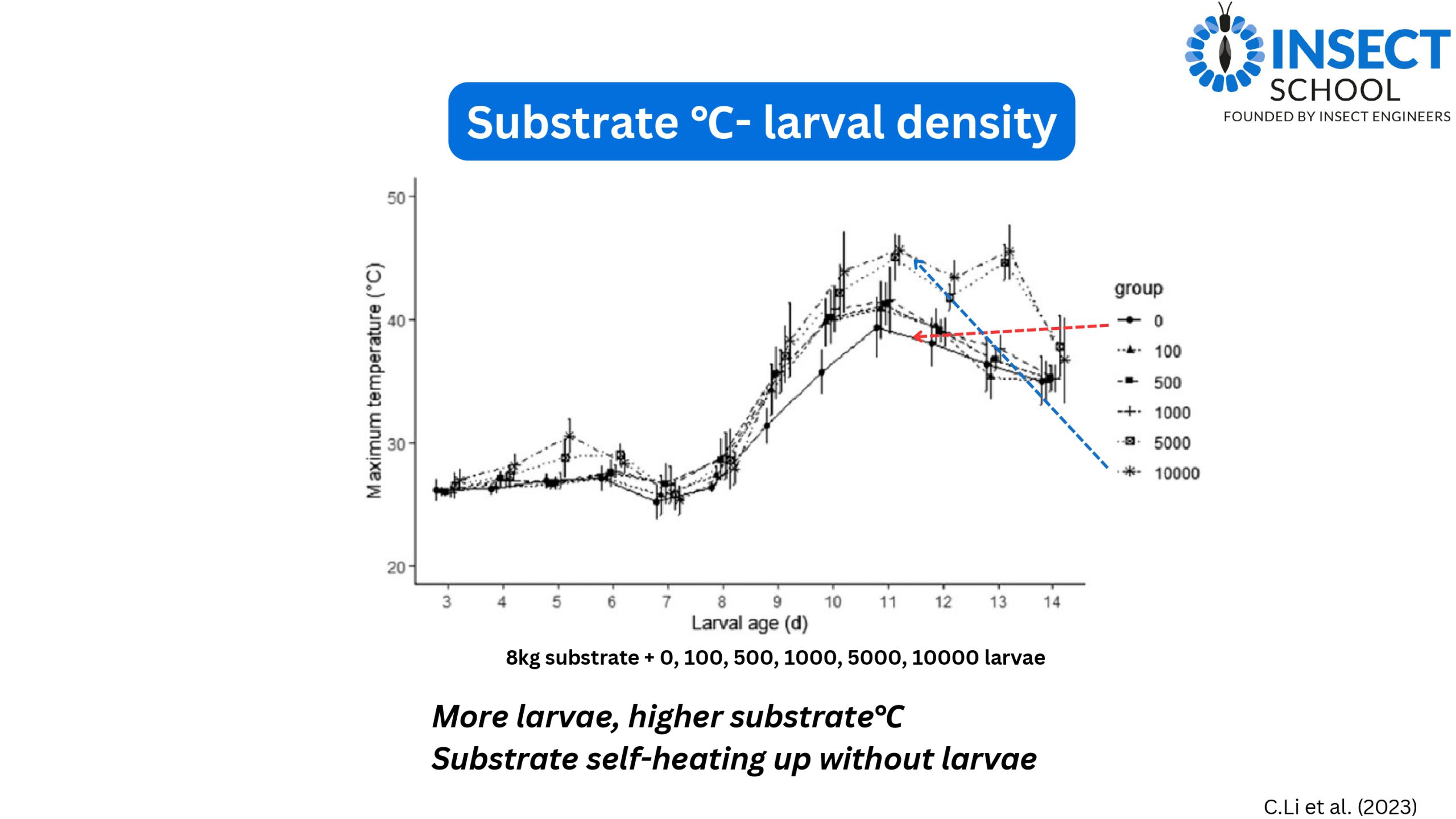
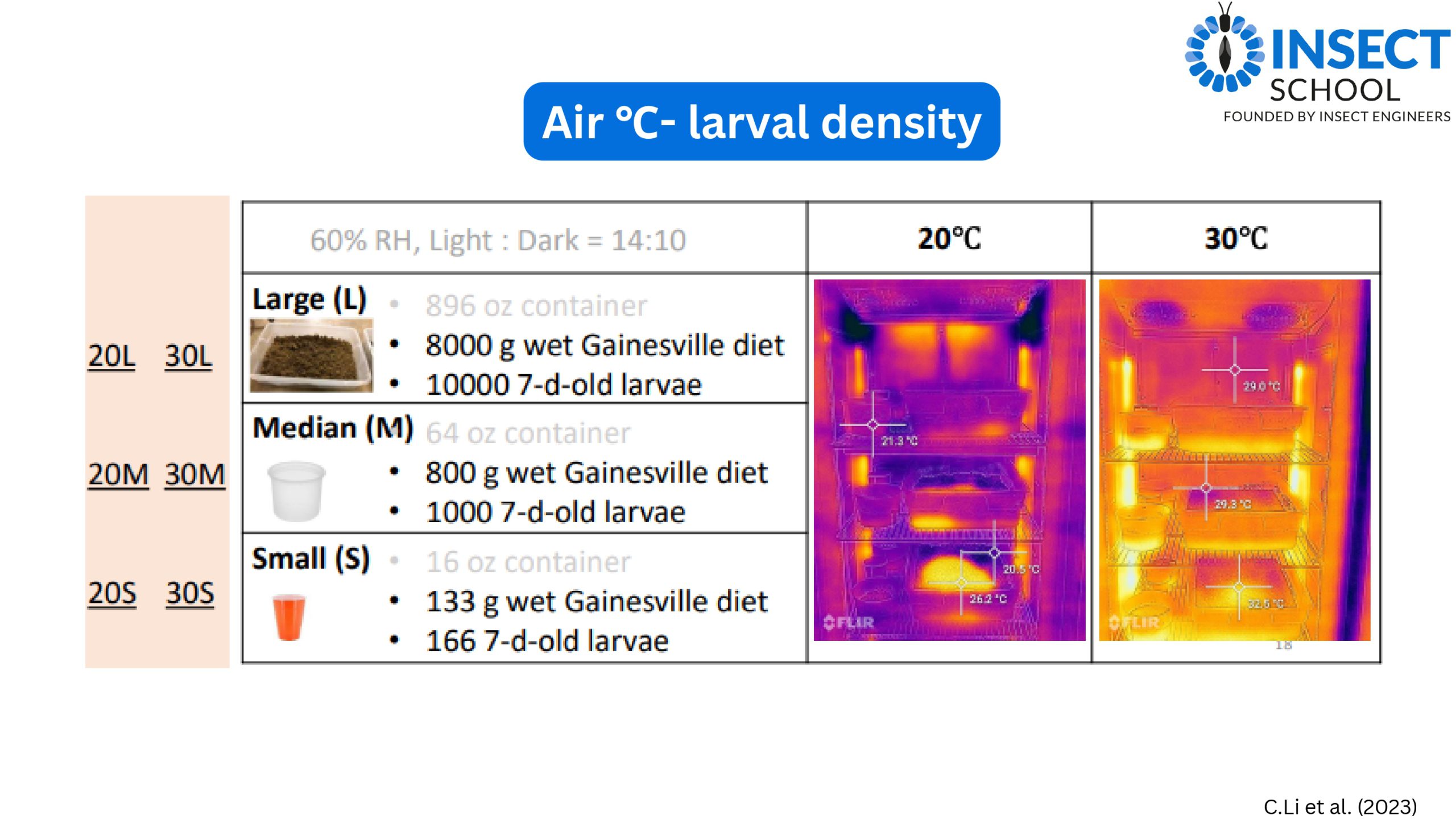
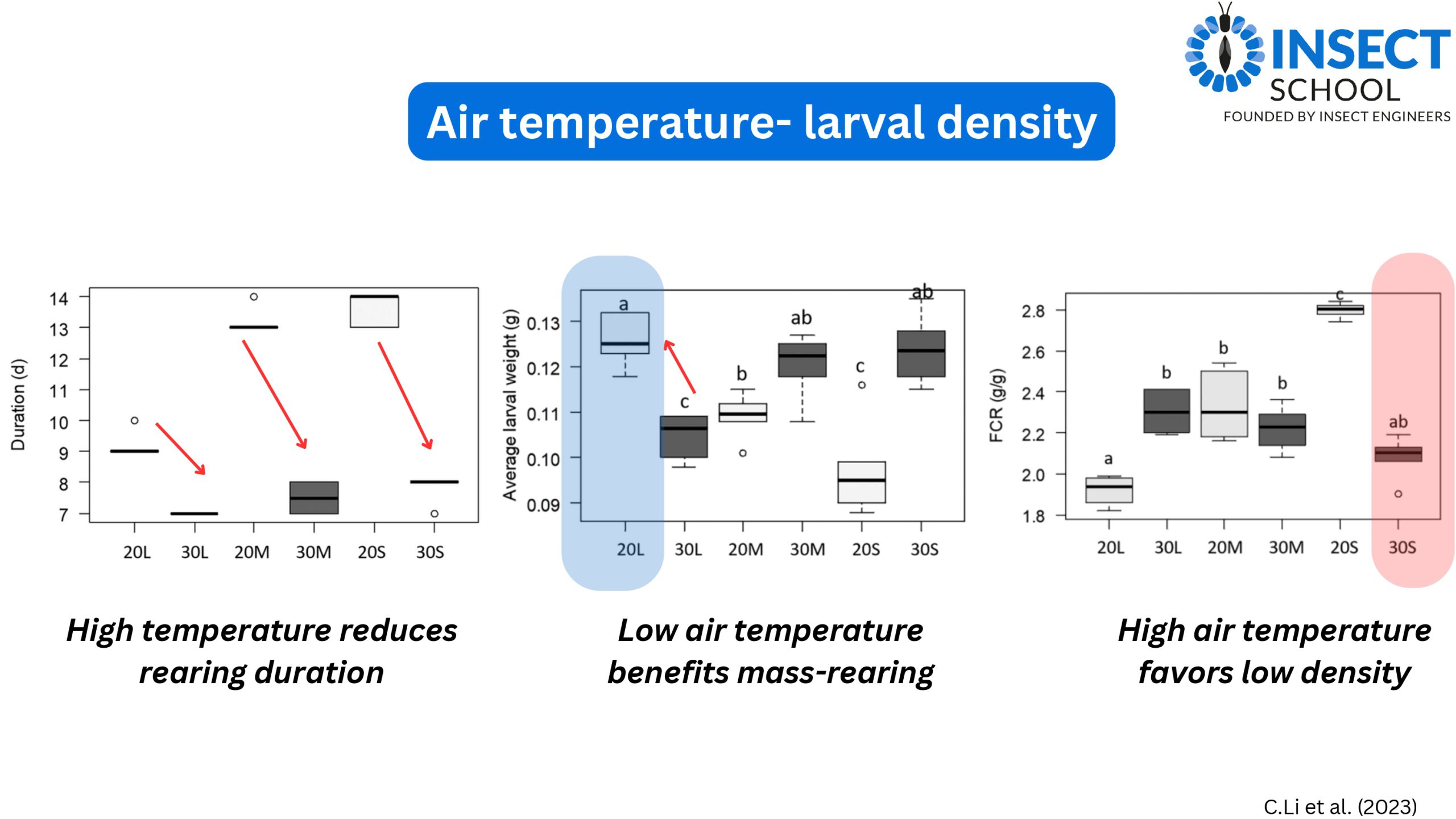
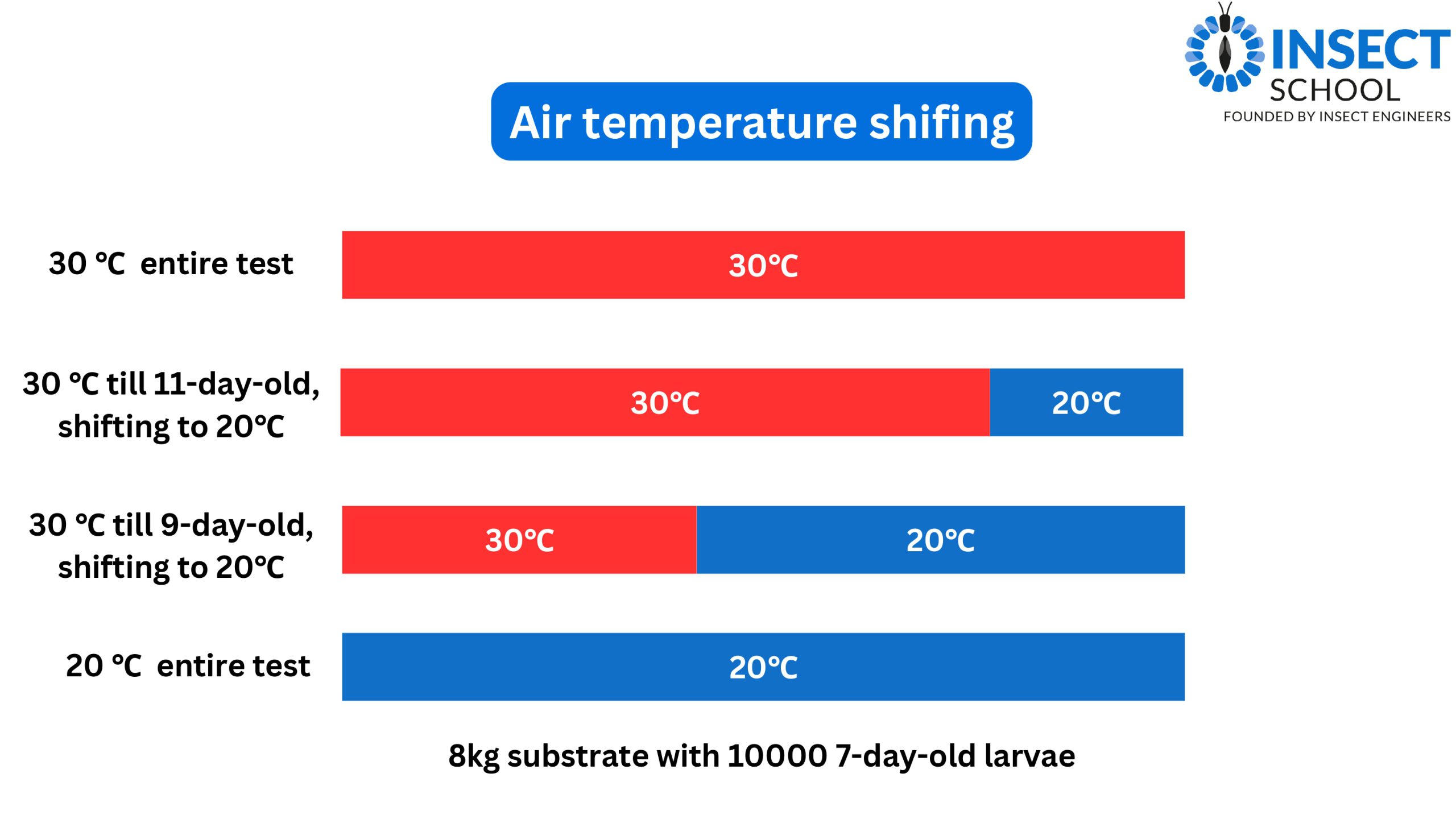
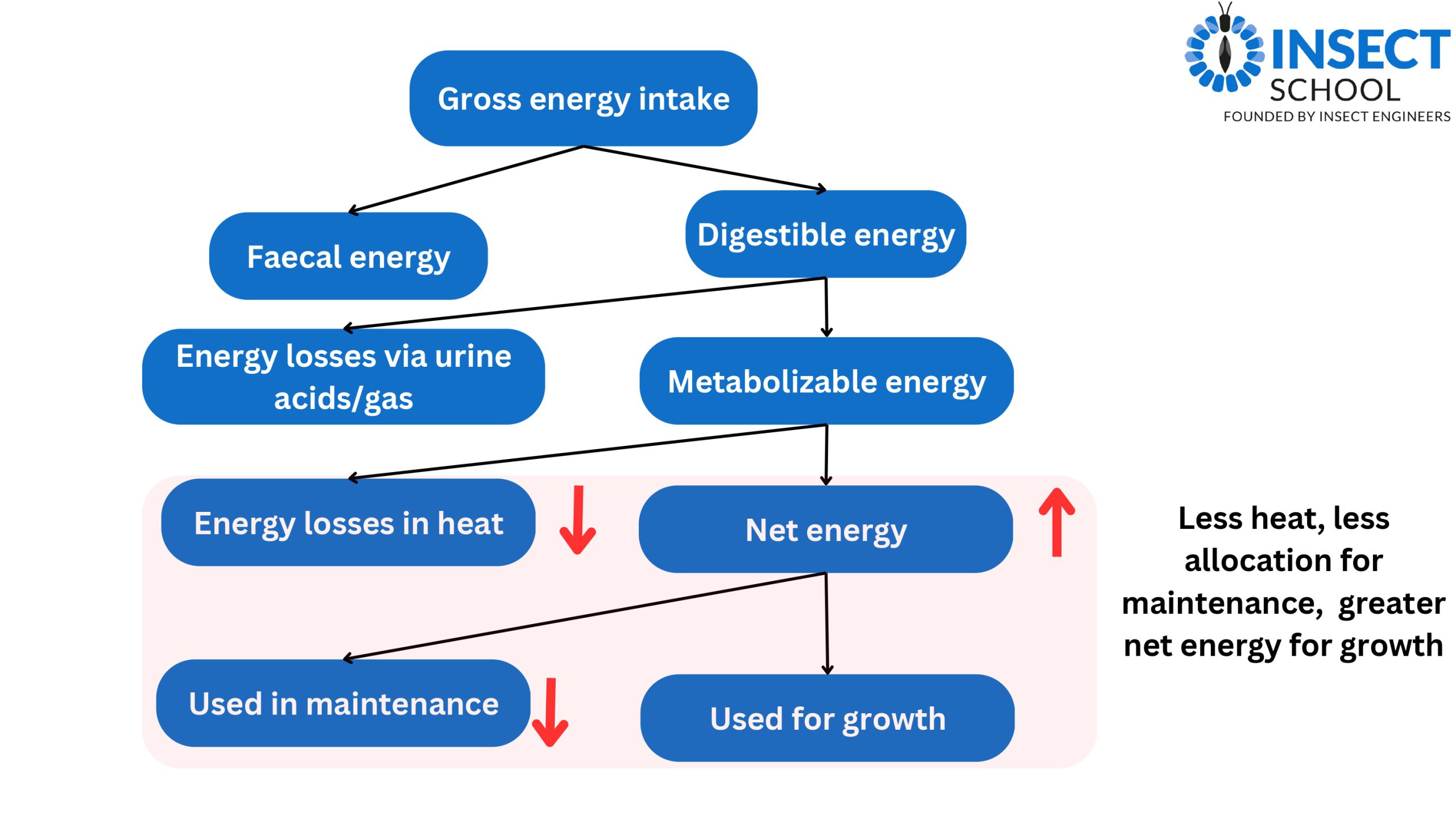
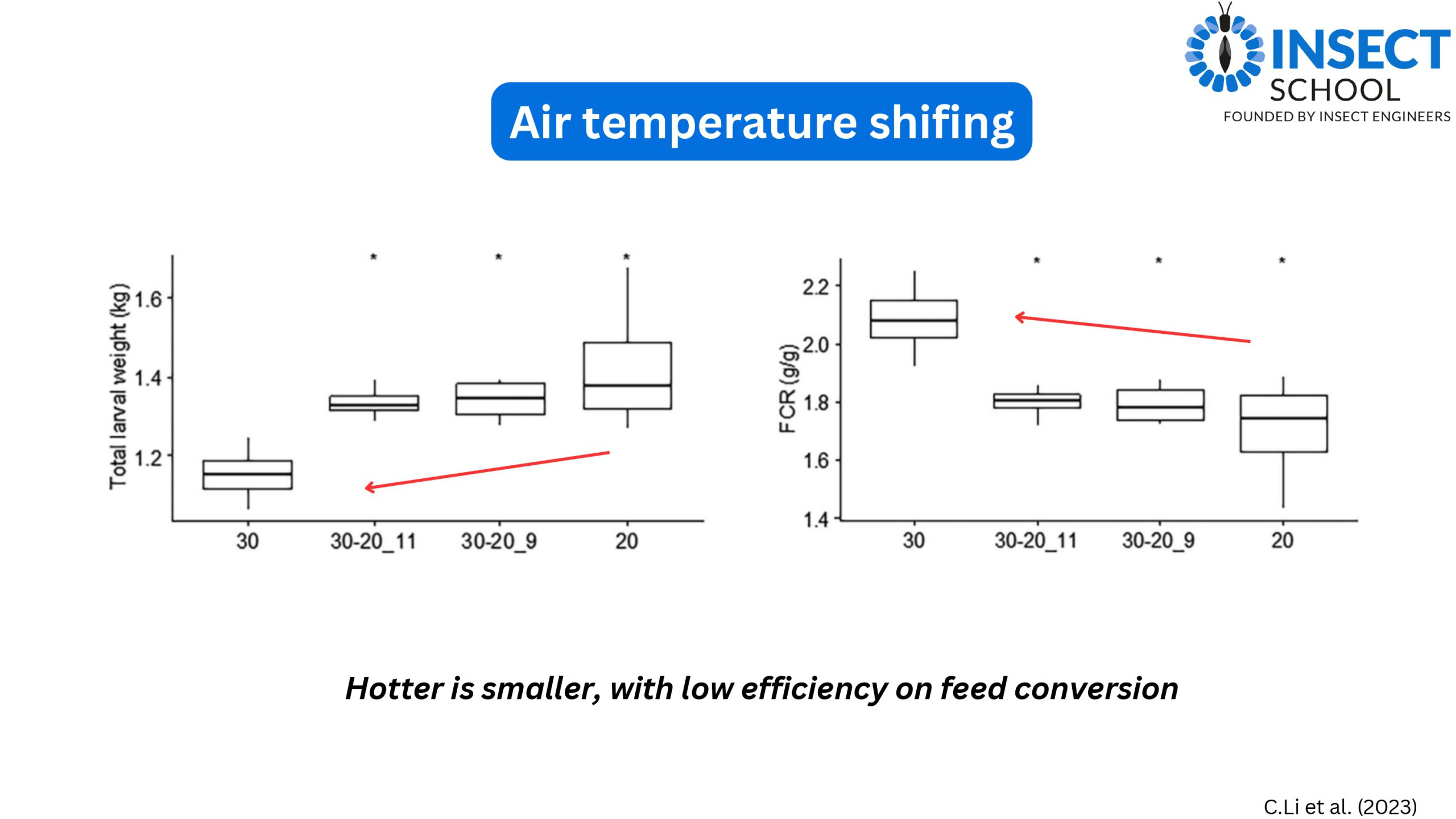
Comments on this post
Comment posted by Bergeron:
Hello,
Thank you for this intersting article.
What was the dimension (lenght x wide x height) of the Large (L) 896 oz container please ?
Best Regards
